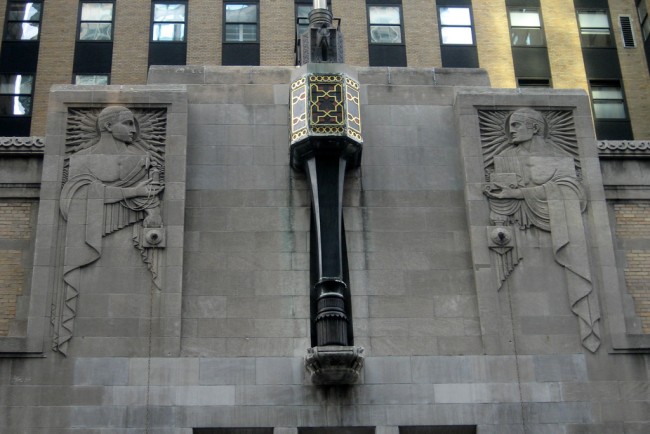
We are celebrating 15 years — and counting — of stories that are deeply researched and deeply felt, that build a historical record of what the city has been.
We are celebrating 15 years — and counting — of stories that are deeply researched and deeply felt, that build a historical record of what the city has been.
REUSING HISTORIC GOVERNORS ISLAND
The 173-acre Governors Island continues its transformation from serving as an active military base to providing a calm getaway for New Yorkers in the spring and summer and a year-round home to a public high school and artist studios. Two summers ago, we spoke with Leslie Koch, President of the Trust for Governors Island – the nonprofit that manages the development of the island, formerly known as the Governors Island Preservation and Education Corporation (GIPEC) – about strategies to create “destination recreation” in this unique public park. Now, the Trust is seeking proposals from retailers, arts groups, educational institutions, hotels and businesses to restore and reoccupy 40 historic buildings currently closed to the public, ranging from a 700-seat theater to a former YMCA. Both commercial and non-profit pursuits are eligible, as long as the use is consistent with the Island’s federal deed of charter. Billed as the “largest opportunity for adaptive re-use of historic buildings in the country,” this RFP marks the beginning of Governors Island’s evolution from a warm-weather park to a year-round attraction.
HAIL A CAB ON YOUR PHONE
On Thursday morning, the New York City Taxi and Limousine Commission (TLC) voted 7-0 in favor of implementing a pilot program that will allow people to hail a cab on their smartphones. Uber, a mobile app, tried to connect New York taxi drivers with passengers earlier this year but claims the City “put up obstacles and roadblocks in order to squash the effort.” This time, the TLC is on board, and many believe the program will benefit taxi riders as well as drivers, including the author of this op-ed in The New York Times, a cabdriver herself.

The Graybar Building, one of 17 buildings the Municipal Art Society would like to see protected in Midtown East | photo by Wally Gobetz
PRESERVING MIDTOWN EAST
In anticipation of a proposed rezoning of Midtown East, the Municipal Art Society and the New York Landmarks Conservancy submitted to the Landmarks Preservation and City Planning Commissions a list of 17 buildings they identify as needing protection from redevelopment. The list, which the groups feel “best convey historic, architectural and cultural significance,” includes the former Mehlin Piano Company Building, the Yale Club, the Graybar Building, and the former Lincoln Building.
BUS COUNTDOWN CLOCKS
In recent years, the MTA has tried to make the bus system more user-friendly by developing BusTime, a distance-based tracking system that tells riders how far the next bus is from the stop, provided they know how to access the system via text or smartphone. On Monday, City Council member Brad Lander announced a resolution to install countdown clocks at bus stops as a next step towards improvement. Lander’s office estimates that the counters will cost between $4,000 and $6,000, amounting to roughly $20 million. Lander is calling upon the MTA, DOT and bus shelter operator Cemusa to make this initiative happen, but the MTA argues that countdown clocks offer only a marginal benefit to riders at high costs.
ARCHITECTURE FOR HEALTH
This week, the American Institute of Architects (AIA) released Healthier Communities Through Design, explaining how the design of the built environment plays a large part in encouraging exercise and improving health, including studies that claim a community designed for physical activity can prevent 90% of type-two diabetes, 50 percent of heart disease and site-specific cancers and strokes. The report is intended to function as a “toolkit for government leaders, design professionals, and other stakeholders working to strengthen their communities” who are looking to incorporate public health into their design agenda. For more on local efforts to promote a healthy lifestyle through urban design, look back at New York City’s Active Design Guidelines.

After ensuring it would not leak oil into the bay, the Coast Guard finally removed a boat washed ashore by Sandy on Staten Island this week | Photo by Thomas Altfather Good via Flickr
SANDY
Despite the large number of New Yorkers displaced by Sandy, the City has no intention of requesting FEMA’s new housing units, improved versions of the trailers that became a common sight wake of Hurricane Katrina. While New Jersey residents are clamoring for them, Mayor Bloomberg said, “We don’t need FEMA trailers. We’re focusing on getting people back into their homes. That’s what we want to do.” Instead the City and the U.S. Department of Housing and Urban Development (HUD) have launched NYC Housing Recovery, a plan to connect displaced residents with already available spaces around the city.
While Sandy displaced some, the storm trapped others. Advocates are calling attention to the fact that many elderly and disabled residents living in high-rise housing projects in isolated areas, particularly Coney Island, Red Hook and the Rockaways, could not leave their apartments, which remained without electricity, heat and hot water long after Lower Manhattan regained its power. The New York City Housing Authority (NYCHA), the nation’s largest public landlord, has struggled to recover after tens of thousands of housing units lost power, heat, and sometimes even water for weeks after the storm. NYCHA isn’t the only authority to come under attack though. At a public hearing on Tuesday, many Long Island residents frustrated by the Long Island Power Authority’s slow restoration of power and outdated equipment called for reform.
Planners are already beginning to prepare for a new normal of increased storm strength and activity, and at end of November, Governor Cuomo created three commissions to improve the resilience of the state’s infrastructure, critical systems and services, and emergency response. Judith Rodin, co-chair of one of the committees, said, “We want to ensure that we actually rebuild more smartly and don’t just replicate what we have, but build things that allow us to become more resilient.” Meanwhile, former deputy mayor Dan Doctoroff argues that New York City was more prepared than most, and that the effects of the storm would have been worse were it not for the City’s PlaNYC initiative, which mandated that new developments such as Governors Island and Brooklyn Bridge Park be designed for flooding (they suffered little long-term damage post-Sandy), helped redraw the city’s evacuation zones to include the Rockaways, and created new guidelines for safer waterfront development.
EVENTS AND TO DOs
BRIC’s ON PURPOSE
You have one more week to go see On Purpose, an exhibition at BRIC featuring work by Brooklyn-based artists, architects and designers that addresses “the environmental challenges of contemporary urban living.” The projects included in the show (which includes work by Rob Stephenson, who recently shared some of his photographs with us in an Omnibus portfolio piece) cross disciplines and media, but all explore solutions to environmental problems in balance with a “desire for beauty in our social, domestic, and professional spaces.”
3D PRINTING POP-UP
With the holiday season in full swing, pop-up stores are cropping up all around the city to bring you one-of-a-kind stocking stuffers. One new pop-up is part store, part lab, and showcases a new technology increasingly captivating techies, designers and consumers: 3D printing. Openhouse presents 3DEA at Eventi Hotel, where you can learn to use Rhino software, play with a Doodle Station, and create customized holiday gifts. Stop by the space before it closes its doors on December 27th.
MUSEUM OF RECLAIMED URBAN SPACE (MoRUS)
The Museum of Reclaimed Urban Spaces (MoRUS) opened last weekend in the East Village. Based on the neighborhood’s tumultuous history of public demonstration and community gardens, MoRUS intends to exhibit artifacts from both local and international grassroots activism. The New York Times recently profiled directors Bill DiPaola and Laurie Mittelmann on the small nonprofit’s struggle to open the space, made worse when Sandy flooded their basement, nearly damaged the entire archives and delayed the grand opening.
BROOKLYN BRIDGE PARK’S PIER 5 OPENS
A new section of Brooklyn Bridge Park opened yesterday, bringing five new acres to the waterfront park designed by Michael Van Valkenberg (who spoke with us when the park first opened). The $26 million dollar converted pier contains three multi-purpose soccer fields and adjacent picnic areas. Within a few weeks a 244-foot pedestrian bridge will be completed, connecting Brooklyn Heights to the waterfront through Squibb Park.
The Roundup keeps you up to date with topics we’ve featured and other things we think are worth knowing about.
The views expressed here are those of the authors only and do not reflect the position of The Architectural League of New York.